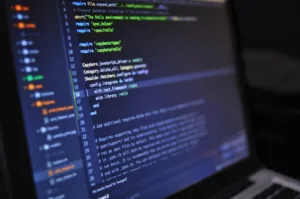Lateral movement is a technique used by attackers to navigate through a network after gaining initial access. This phase allows them to escalate privileges, access sensitive data, and potentially take control of critical systems. Preventing lateral movement is crucial for maintaining the integrity of enterprise networks. Key strategies include protecting credentials, deploying strong authentication practices, segmenting networks, and continuous monitoring. Implementing these measures can significantly reduce the risk of a successful breach.
TL;DR
- Lateral movement is a critical phase in cyberattacks where attackers move through a network after initial access.
- Key prevention strategies include protecting credentials, deploying strong authentication, network segmentation, and monitoring.
- Tools like EDR, MFA, and honeypots are essential for detection and prevention.
- Red Teams and Blue Teams can leverage these strategies to enhance their offensive and defensive capabilities.
Key Takeaways:
- Protect Credentials: Ensure passwords are not stored in plain text and use hardware-backed storage.
- Deploy Strong Authentication: Implement multi-factor authentication (MFA) and logon restrictions.
- Segment Networks: Divide networks into smaller segments to limit attacker movement.
- Monitor Continuously: Use tools like EDR and honeypots to detect and respond to suspicious activities.
Understanding Lateral Movement
Lateral movement refers to the techniques attackers use to navigate through a network after gaining initial access. This phase is critical for attackers to escalate privileges, access sensitive data, and potentially take control of critical systems. Common techniques include Pass-the-Hash, Pass-the-Ticket, and Mimikatz[^1].
Key Prevention Strategies
1. Protect Credentials
- Password Management: Ensure passwords are not stored in plain text. Use hardware-backed credential storage where possible[^1].
- Credential Dumping Prevention: Protect password hashes and use tools like Mimikatz detection scripts to identify credential theft attempts.
2. Deploy Strong Authentication
- Multi-Factor Authentication (MFA): Implement MFA for internet-facing services and high-risk accounts[^1].
- Logon Restrictions: Use password lockout and throttling to reduce the chances of brute-force attacks.
3. Network Segmentation
- Microsegmentation: Divide networks into smaller segments to limit attacker movement. Ensure each segment can only communicate with others as necessary for business functions[^3].
- Firewalls: Enable local firewalls on hosts to restrict unnecessary inbound and outbound traffic.
4. Continuous Monitoring
- Endpoint Detection and Response (EDR): Use EDR solutions to monitor and respond to suspicious activities on endpoints[^5].
- Honeypots: Deploy honeypots to detect and investigate unexpected connections within the network[^1].
Tools and Techniques for Detection
Endpoint Detection and Response (EDR)
EDR solutions like CrowdStrike Falcon provide real-time monitoring and response capabilities. They can detect unusual activities such as credential dumping and privilege escalation[^5].
# Example: Detecting Mimikatz with EDR
import os
import subprocess
def detect_mimikatz():
process_list = subprocess.check_output(["ps", "-e"]).decode("utf-8")
if "mimikatz" in process_list.lower():
print("Mimikatz detected!")
else:
print("No Mimikatz detected.")
detect_mimikatz()
Honeypots
Honeypots are decoy systems designed to attract attackers. They can be used to detect and investigate lateral movement attempts.
# Example: Simple Honeypot in Python
from flask import Flask, request
app = Flask(__name__)
@app.route('/')
def index():
return "Welcome to the honeypot!"
if __name__ == '__main__':
app.run(host='0.0.0.0', port=8080)
Relevance to Target Audience
Red Teams
Red Teams can use these strategies to simulate lateral movement attacks and identify vulnerabilities in the network. Tools like Mimikatz and PsExec can be used to test the effectiveness of existing defenses.
Blue Teams
Blue Teams should focus on implementing and maintaining the prevention strategies mentioned above. Continuous monitoring and regular audits are essential for detecting and responding to lateral movement attempts.
SOC Analysts
SOC Analysts should leverage EDR solutions and honeypots to detect and investigate suspicious activities. Regular training and awareness programs can help in identifying and mitigating potential threats.
Conclusion
Preventing lateral movement is a critical aspect of securing enterprise networks. By protecting credentials, deploying strong authentication, segmenting networks, and continuously monitoring for suspicious activities, organizations can significantly reduce the risk of a successful breach. Red Teams, Blue Teams, and SOC Analysts play a crucial role in implementing and maintaining these strategies to ensure the security of their networks.
References
- Preventing Lateral Movement. NCSC. Retrieved October 2023.
- What is a Lateral Movement? Prevention and Detection Methods. Fortinet. Retrieved October 2023.
- Preventing Lateral Movement 101. TrueFort. Retrieved October 2023.
- 10 Steps to Stop Lateral Movement and Data Breaches. BeyondTrust. Retrieved October 2023.
- What is Lateral Movement?. CrowdStrike. Retrieved October 2023.
- Understand and investigate Lateral Movement Paths. Microsoft. Retrieved October 2023.
- Mitigating Lateral Movement with Zero Trust Access. Cisco. Retrieved October 2023.
- What Is Lateral Movement?. Palo Alto Networks. Retrieved October 2023.
- What Is Lateral Movement and How to Detect and Prevent It. Exabeam. Retrieved October 2023.
- Lateral Movement Protection. Silverfort. Retrieved October 2023.






